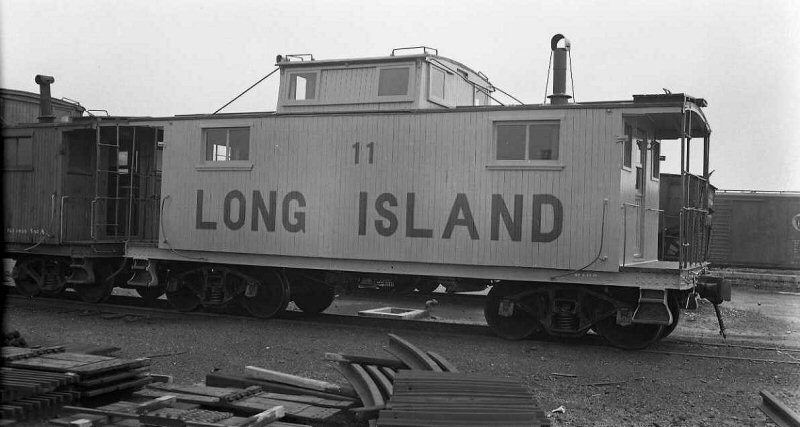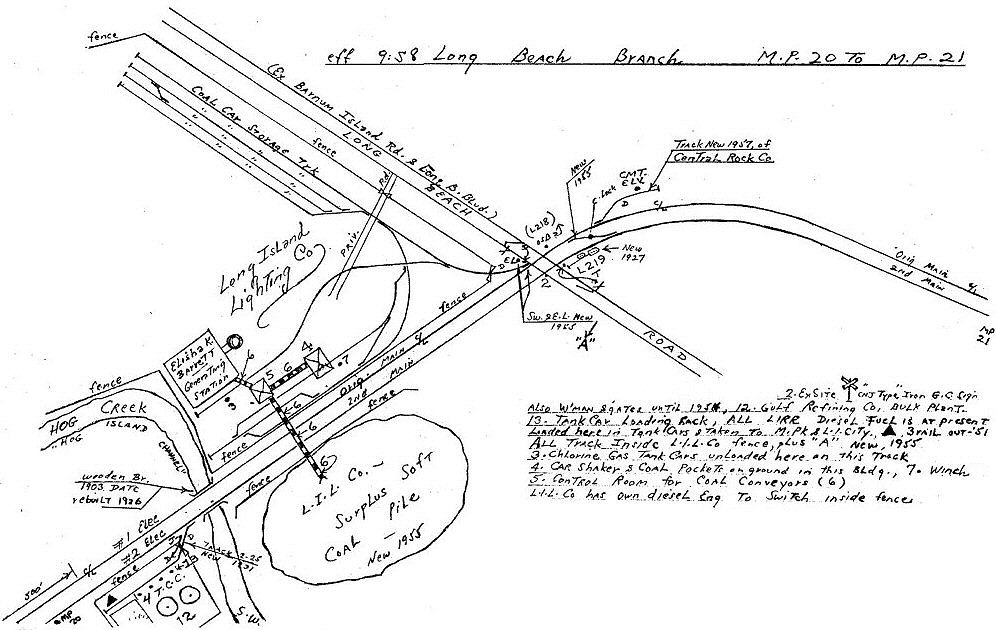by vince
Greeting All,
I am in the process of laying out the 1950's era trackwork at the Barrett Generating Station (LILCO) at Island Park on the LIRR Long Beach branch and ask if anyone "knows" the track capacities in the four tracks in the coal car storage yard?
I do have the Emery Map Long Beach Branch M.P.20-21 but the storage track capacitys are not mentioned.
Here is a screen capture of the model and a diagram of the tracks I have installed.
The Coal Car Storage labled in the second screen capture are the ones in question. That is a ten car rack shown parked.
The first pic is supposed to be 2xDD1 power but I don't have that model yet and so used 2xPRR B-1's.
The storage tracks are out of sight behind the camera in the model picture, around on the south side next to Long Beach Road.
Any help appreciated.
Regards,
vince
I am in the process of laying out the 1950's era trackwork at the Barrett Generating Station (LILCO) at Island Park on the LIRR Long Beach branch and ask if anyone "knows" the track capacities in the four tracks in the coal car storage yard?
I do have the Emery Map Long Beach Branch M.P.20-21 but the storage track capacitys are not mentioned.
Here is a screen capture of the model and a diagram of the tracks I have installed.
The Coal Car Storage labled in the second screen capture are the ones in question. That is a ten car rack shown parked.
The first pic is supposed to be 2xDD1 power but I don't have that model yet and so used 2xPRR B-1's.
The storage tracks are out of sight behind the camera in the model picture, around on the south side next to Long Beach Road.
Any help appreciated.
Regards,
vince
 at Holban Yard 1956 from the roster:
at Holban Yard 1956 from the roster: 